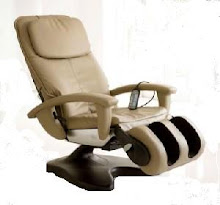Very few people wear good fitting healthy shoes. There are a number of reasons for this and they range from a general ignorance about foot health through to prioritizing fashion and style above comfort and wear-ability. Price is also a factor with short lived fashion shoes often being cheaper than the less fashionable comfort style footwear.
What is and is not a good shoe will always be open to debate, however there are a number of design traits that ensure that some shoes are superior to others. To find out what the different parts of a shoe are called and how they work together you need to look at the anatomy of a shoe. You can find lists and pictures of the different shoe component compositions by searching online. These lists/pictures of the various parts of a shoe describe what they do and how they interact with the rest of the shoe or boot. This will give you an understanding of how much thought and attention goes into designing and manufacturing a good shoe.
Paramount to being a good shoe is having a good build quality. This relates to the materials used and the way in which they are put together. Not too many years ago manmade fabrics were seen as inferior to leather and suede, but modern synthetic materials can be waterproof, breathable and stylish and many comfort and orthopedic shoes are made from materials of this type. Even tough walking and hiking shoes use manmade fabrics that keep the water out whilst letting water vapour escape.
Good linings and plenty of supporting padding are very important for any good shoe. Parts of the foot like the arch need to be adequately supported and the heel needs to have a strong high counter that does not bend or flex. The padding plus a good insole will act like a suspension system evening out poor surfaces and preventing shock waves shuddering up the body.
The inside of the shoe should also be smooth and free of seems and any other projecting parts of the construction. Having a shoe that rubs or is abrasive towards any part of the foot is not only uncomfortable, but also potentially damaging. Good linings are very often a measure of a high quality pair of shoes and good shoes should never make your feet, legs or back ache.
Most quality shoes, particularly those tagged as being orthopedic, will have the upper made from many separate sections. Each of these parts has a particular function and combining one or more of these parts can dilute the shoes overall performance. As an example, many fashion shoes do not have separate toes boxes and this can result in the important toe box losing its shape and contorting or constraining the toes in an unnatural way. Toe boxes need to give the toes adequate space to move.
Ultimately the best way to select a pair of shoes is to try them on, test them and make sure that they still feel good after several hours of wear. Regrettably this is of course never possible, so arming yourself in advance with as much information as possible about well designed and made shoes is the next best alternative. Good shoes never come cheap!

